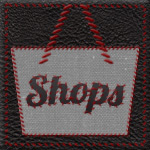I don’t often have time for a written update, but the events of the last 24 hours demand that I set aside some time tonight to describe some of the things we experienced today.
The first part of our drive through Quebec was typical northern scenery – trees, lakes, etc. We drove down to Lake Kipawa the night before, and it was Muskoka-esque, without the mansions. But today we entered the southern part of what’s known as the “little claybelt” – an agriculturally rich area in the North, with a good dose of the things that make the north, the north. Namely, forests, lakes and rocks.
We woke up at the campground at La Bannik in Duhamel-Ouest and walked down the street to Fort Temiskaming, one of Parks Canada’s historical sites. Alexe, Ed and I were all fairly impressed by the pieces they had on display and their “interpretive centre.” This term seems to come up a lot, and all it essentially means is a museum. The “interpretive” aspect is the information they present to make the objects (photos, videos, artifacts) relevant to you.
Fort Temiskaming was a trading post, and seemingly a hotly contested one by both the French and English trading companies of the era. The spot was chosen for the narrowness of the lake, which allowed for easy movement of goods from one side to the other. There was also a cedar forest, where the trees had all bent in strange shapes due to the calcium content in the soil.
We then went to visit the Lourdes Grotto in Ville-Marie that easily has one of the prettiest and highest views in the region. We stopped at the house of Father Moffat, the person generally credited with starting farming in the area.
We then drove out to Ile du College on a little country road. For literally years I’ve looked at this map and wondered what this place was like. Ed was pretty adamant that we visit as well, even though it could only be a few kilometers of road.
We were not disappointed – this little island had rolling farmland, and afforded some pretty spectacular views of the lake. Both the drive in (over this tiny stone causeway) and out were well worth it.
The rest of our drive and day offered similarly spectacular views, yellow canola fields lighting up our eyes, gently rolling hills with massive rocks and forests framing it all.
We parked in Notre-Dame du Nord and ate sandwiches at the side of the road, then continued on into Ontario, where the landscape was largely the same.
We took a chance, deciding to try the road to Belle Vallee Wools, and both RV and motorcycle made it through unscathed, although the last 12km was some pretty serious gravel road. The bee hives surrounded by electric fences to keep bears away was an amusing sight. We arrived at Belle Vallee just as they were starting a tour, and they showed us how they make their wares (wool blankets, scarves, yarn, toques, mittens, etc.) from start to finish – the only place that controls the entire process. The result is nothing short of incredible.
I’d be the first to admit that we tend to be heavy on the hyperbole here, but this place, and the owner, Dave, control the entire process. They shear their sheep (and buy from other farmers in the area), card and comb all the wool, process it into yard, do the billions of tiny little processes that take to make any one of the object you might purchase, and you can tell. Dave is a great storyteller, and his love of this work comes through, not only in his descriptions of each machine, it’s history and it’s place in the process, but in the things you buy. We touched an unwashed blanket and a washed one, and were all pretty much sold of how the extra washing makes the difference. AND you can wash their goods without any worry of shrinkage! How neat is that.
Tonight we’re at the Sutton Bay Campground and the place is right on the shores of Lake Temiskaming. Our host, Ray Laferriere, has been more than hospitable, and is another fabulous example of how friendly people in the North can be. Our site is also pretty gorgeous.
So what are you waiting for?











